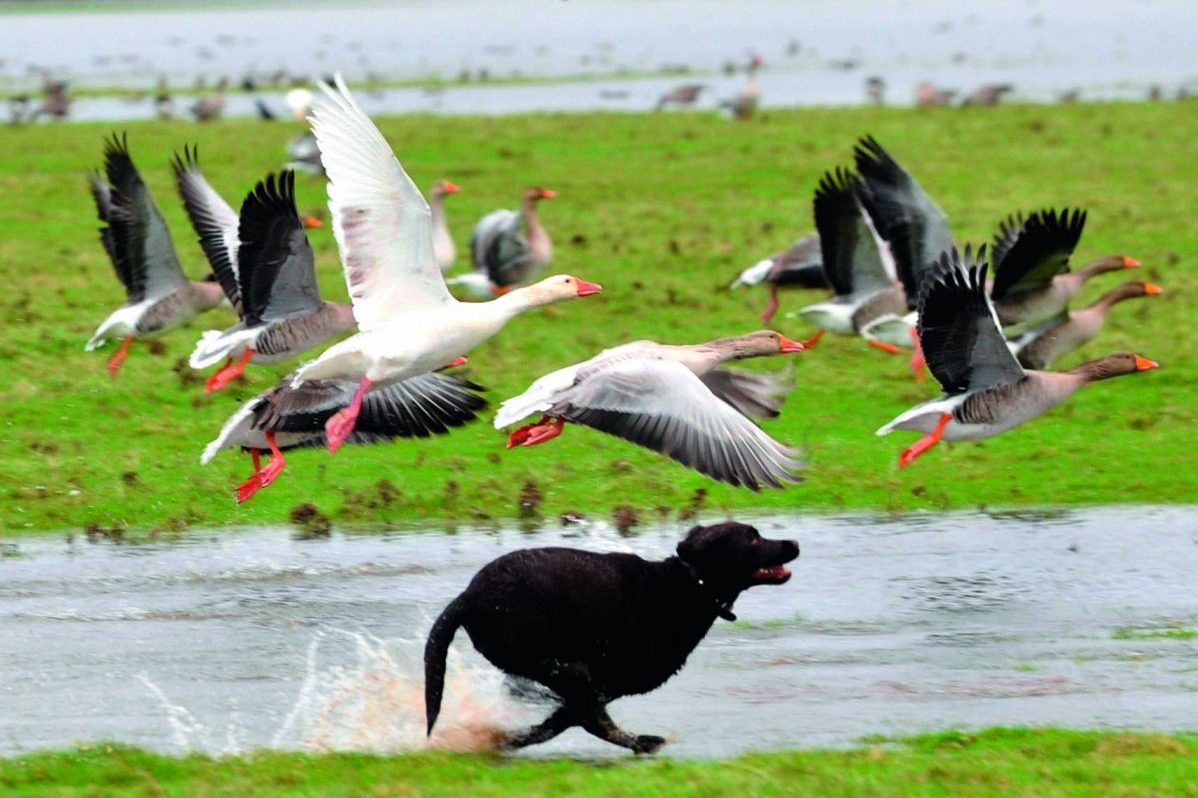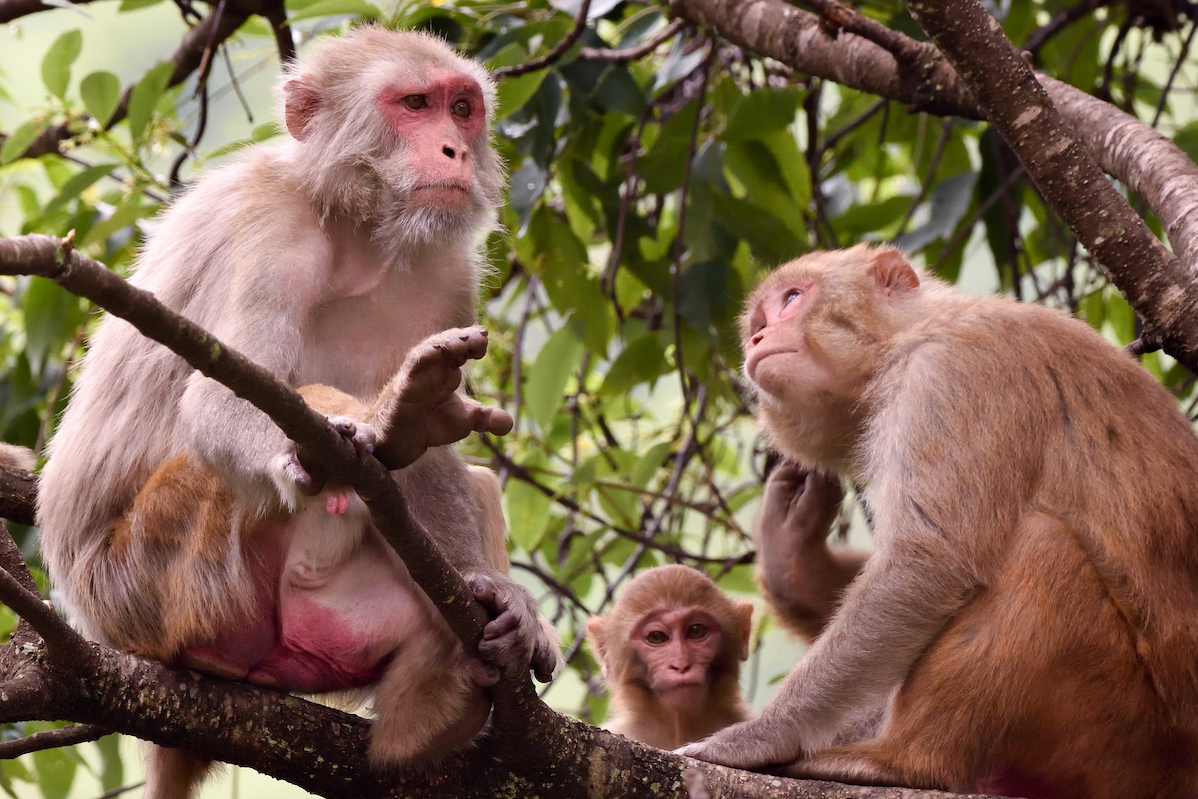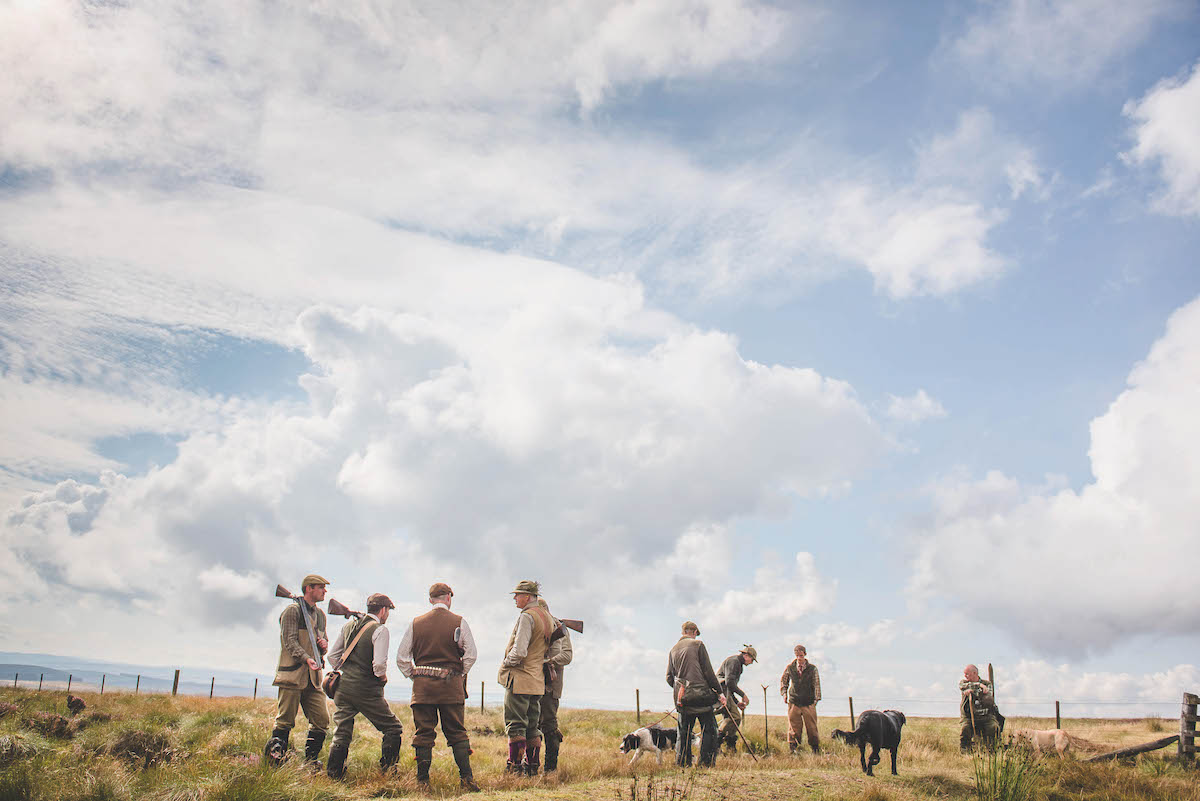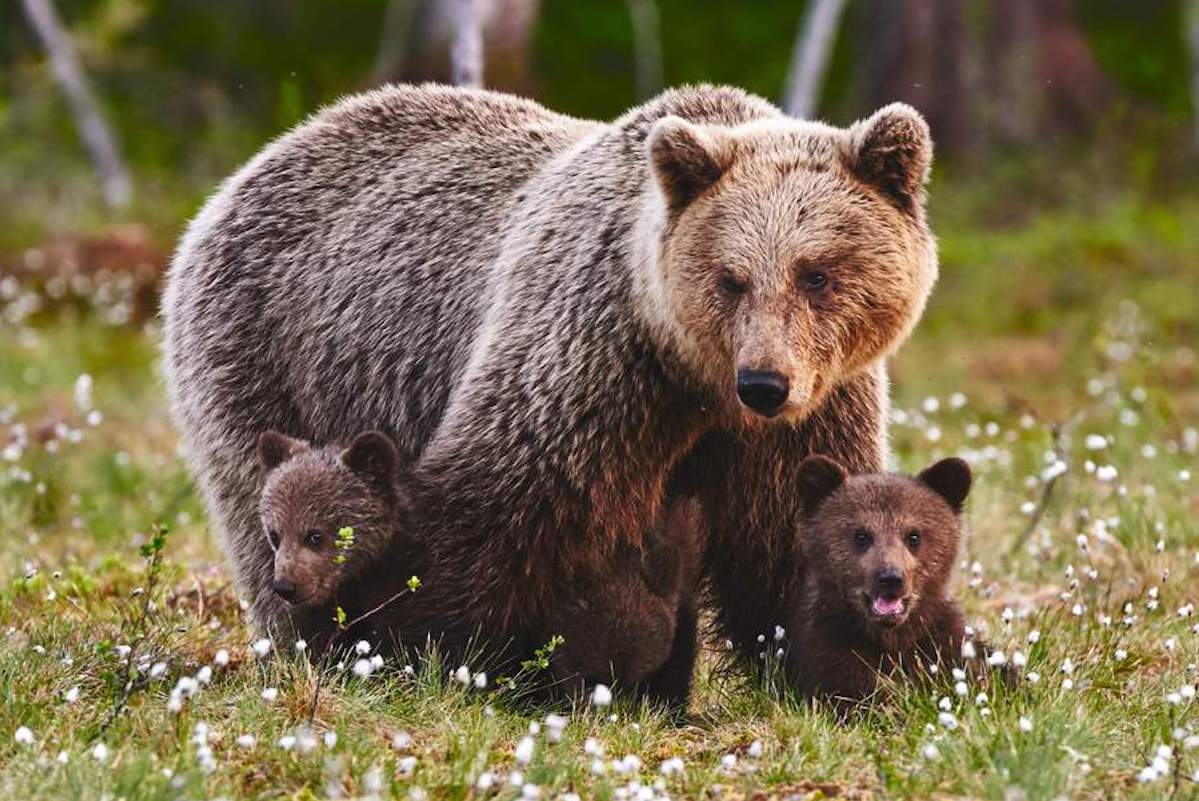Are cats and dogs killing off our gamebirds?
We are a nation of pet lovers but owning an animal is a responsibility and people must understand the harm they cause, stresses Jack Bell as he asks if cats and dogs are killing off gamebirds

An uncontrolled dog is chiefly a danger to bird life, but potentially also to itself
Across more than 5,000 acres of rural Galloway, you’d expect there to be plenty of good spots to have a seat, but there is one particular heather-clad knoll on the periphery of our shoot that I visit at least once a week during the spring months. It doesn’t look like much but it serves a purpose. This mound is positioned above the flattest area of our shoot, a 200-acre bog with tall reed beds, rank heather and deep uncrossable ditches. It’s not the best view, but it looks over a place that’s almost impossible to access and has been left practically untouched since the drainage ditches were dug by the Improvers in the 18th century.
This unmanaged remote corner of our shoot provides a service; its rough edges, untamed corners and small natural clearings act as a refuge for wildlife in an otherwise unrecognisable landscape.
There’s a hill loch not far from the bog that plays host to curlew, lapwing, oystercatcher, snipe and an array of waterfowl. At least three broods of geese are being raised in the bog this year, in the nursery of wet drains and reeds. Once they are old enough, their parents will walk them over the hill to the nearby loch, by which time they will hopefully be too big to be predated upon by the local pike.
With little human disturbance, the tranquillity of this place allows wildlife to flourish in the background without heavy footfall or the public’s prying eyes — which can, in some circumstances, be a hindrance to natural cycles.
Although the bog and its margin habitat have a number of very welcome positives, ground predation can be a problem. Luckily, I can control foxes and corvids, to a certain extent, under the terms of the Scottish general licences. It’s a natural factor and levels fluctuate depending on the balance of prey and predator species, which is directly correlated to habitat and land use.

Careful and appropriate management preserves the area for both humans and wildlife
Pressurised
As the human population in the UK continues to grow it is inevitable that we will slowly begin to run out of room, meaning that the available habitat for wildlife will become condensed and pressurised by major land uses that often indirectly favour predatory species.
In the COVID-19 era, access to the countryside became a lifeline for most — when the majority of life was spent in confinement, we began to appreciate our open spaces. I’m a great believer in open access to the countryside and I feel lucky to have the right to roam here in Scotland.
There is one marked footpath through the centre of our shoot that follows the old drover’s road to an ancient cabin up on the hill. The footfall is not huge and you are unlikely to meet anyone if you walked its entirety on a Sunday afternoon. It passes by the loch where the oystercatcher nests in the hollowed-out top of a rotten gate post. The bird seems relatively undisturbed by the presence of the occasional walker who stops to view its eggs.

Lapwings are in terrible decline and disturbance by dog walkers is a real problem in tourist hotspots
I am aware we are lucky in Galloway; we don’t have a big enough population nearby that would most likely increase irresponsible access. In terms of issues for nesting birds, responsible public access to the countryside poses no real significant problem. However, irresponsible access, particularly by dog walkers, is increasingly becoming an issue on publicly accessible land, especially
on nature reserves.
It is rare for wildlife charities to report negatively about UK pets having detrimental effects on wildlife populations. It wasn’t until recently that the RSPB started to accept that cats caused any issues for breeding birds and the major wildlife charity still states that there is no scientific evidence to support cats having a negative effect on bird populations.
However, it is well documented that domestic cats in Britain kill around 100 million prey in the spring and summer months, of which 27 million are birds. Quite a figure when compared with popular UK bird populations, such as the house sparrow, with a population of between six and seven million pairs. The lack of scientific evidence for pet cats having any effects on wildlife is reflected in the lack of solid evidence for dog-related disturbance having impacts on breeding birds.
Misconceptions
With around 34% of the UK public owning a dog, dog walking is clearly one of the main incentives for people to access the countryside and open spaces. A significant percentage of canine disturbance to wildlife takes place during critical periods such as the breeding bird season which, generally speaking, aligns with the best weather for escaping into the ‘great outdoors’.
The common misconception that immediate fatality is the only factor that constitutes disturbance has been fostered by a subsection of society who do not access land responsibly and are often very vocal in justifying their canine companions’ actions. Ecologists use the term ‘sub-lethal’ for an action that harms wildlife indirectly but does not cause immediate fatality. These include pushing a bird off its nest, causing undue stress, preventing a species from accessing its feeding grounds or degrading suitable habitat.
Like all living things, birds have an inherent tolerance to disturbance, and being pushed off a nest once or twice during the incubation period is not detrimental. However, sustained disturbance causing unnecessary stress will cause harm, including possible fatality to both the parent birds and brood in the long-term.
Birds have a long evolutionary relationship with canids and the mere sight of a dog can trigger a strong response. An Australian study found that even responsible access, with dogs being kept on leads during a woodland walk, could lead to a 35% reduction in bird diversity and a 41% reduction in abundance, highlighting the possible impacts of dogs in the natural environment.
In the UK, Holkham National Nature Reserve in Norfolk continually faces issues with irresponsible dog walkers, including effects on nationally important breeding colonies of little tern and ringed plover. In a plea to dog walkers, the reserve manager said that “being disturbed, or even chased, by dogs, and continually having to move away from their feeding areas, is a waste of birds’ precious energy and also cuts down on the time they have to feed… the alarming effects that dogs can have on wildlife can be devastating”.
It’s not only birds that are affected; seals, hares and deer are continually reported as being harassed, harmed and sometimes killed by uncontrolled dogs at Holkham. Even the rare vegetation categories on the fragile coastal ecosystems can be adapted through excessive fertilisation from dog faeces.

An idyllic corner of the world conducive to quiet activity and reflection is invaluable for all
Dangerous ignorance
I recently took a fishing trip to Loch Leven — which not only boasts one of the best wild brown trout fisheries in the country but is also a national nature reserve, Special Site of Scientific Interest (SSSI) and a Special Protection Area (SPA), cited for its breeding bird assemblage that includes tufted duck and gadwall. One of the NatureScot rangers told me that there isn’t a week that goes by without an incidence of uncontrolled dog related disturbance and gave a perfect example that illustrates the ignorance of those with uncontrollable dogs.
This year a pair of breeding mute swans had taken up residence on a small island 50m from the loch’s bank on a popular circular footpath. A black labrador had swum out to the island nest and began barking continuously at the pen sitting on her clutch. On seeing the commotion, the cob arrived and tackled the dog, nearly drowning it in the process.
The dog eventually returned to the bank with its tail between its legs and was seemingly very shaken by the altercation. After the ordeal, the dog’s owner complained to the reserve staff that the swans were a danger to visitors and posed a safety risk, while refusing to accept that her dog had done anything wrong.
Wildlife charities and reserves provide a service; they bring people into the countryside and, in principle, they adapt landscapes to suit species that require conservation. We share many common goals, but we are often portrayed as the enemy. Both sides are guilty of focusing on the downfalls of the other, rather than our commonalities. The RSPB’s tagline of “giving nature a home” is a commendable aim, but due to its publicly funded charity status it must also accommodate high levels of public interaction and footfall. This is often to the detriment of the wildlife that it seeks to protect.
Quiet corner
Collectively, we now recognise that we are running out of land. The knoll where I sit and wait for foxes at last light is a vital place, not only for carrying out pest control to protect species of conservation concern, but as a quiet corner that goes unnoticed and allows wildlife to thrive without irresponsible access. It is a special place to me, but it is not unique. There are many like it on shoots across the country, which are promoting wildlife through practical conservation.
We are often criticised from within our own ranks for not promoting our conservation successes. However, these successes often rely on taking a role in the background, happily working away funded from our own pockets. Our conservation methods and objectives may not align entirely with wildlife charities, but we should all work collaboratively to promote sustainable and sensible access, especially with canine companions and particularly at critical times of the year








